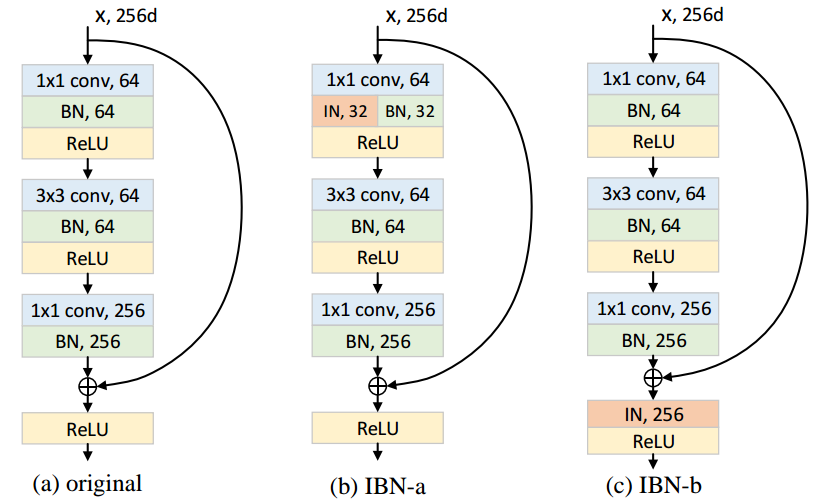import torch
model = torch.hub.load('XingangPan/IBN-Net', 'resnet50_ibn_a', pretrained=True)
model.eval()
All pre-trained models expect input images normalized in the same way,
i.e. mini-batches of 3-channel RGB images of shape (3 x H x W), where H and W are expected to be at least 224.
The images have to be loaded in to a range of [0, 1] and then normalized using mean = [0.485, 0.456, 0.406]
and std = [0.229, 0.224, 0.225].
Here’s a sample execution.
# Download an example image from the pytorch website
import urllib
url, filename = ("https://github.com/pytorch/hub/raw/master/images/dog.jpg", "dog.jpg")
try: urllib.URLopener().retrieve(url, filename)
except: urllib.request.urlretrieve(url, filename)
# sample execution (requires torchvision)
from PIL import Image
from torchvision import transforms
input_image = Image.open(filename)
preprocess = transforms.Compose([
transforms.Resize(256),
transforms.CenterCrop(224),
transforms.ToTensor(),
transforms.Normalize(mean=[0.485, 0.456, 0.406], std=[0.229, 0.224, 0.225]),
])
input_tensor = preprocess(input_image)
input_batch = input_tensor.unsqueeze(0) # create a mini-batch as expected by the model
# move the input and model to GPU for speed if available
if torch.cuda.is_available():
input_batch = input_batch.to('cuda')
model.to('cuda')
with torch.no_grad():
output = model(input_batch)
# Tensor of shape 1000, with confidence scores over ImageNet's 1000 classes
print(output[0])
# The output has unnormalized scores. To get probabilities, you can run a softmax on it.
probabilities = torch.nn.functional.softmax(output[0], dim=0)
print(probabilities)
# Download ImageNet labels
!wget https://raw.githubusercontent.com/pytorch/hub/master/imagenet_classes.txt
# Read the categories
with open("imagenet_classes.txt", "r") as f:
categories = [s.strip() for s in f.readlines()]
# Show top categories per image
top5_prob, top5_catid = torch.topk(probabilities, 5)
for i in range(top5_prob.size(0)):
print(categories[top5_catid[i]], top5_prob[i].item())
Model Description
IBN-Net is a CNN model with domain/appearance invariance. Motivated by style transfer works, IBN-Net carefully unifies instance normalization and batch normalization in a single deep network. It provides a simple way to increase both modeling and generalization capacities without adding model complexity. IBN-Net is especially suitable for cross domain or person/vehicle re-identification tasks.
The corresponding accuracies on ImageNet dataset with pretrained models are listed below.
| Model name | Top-1 acc | Top-5 acc |
|---|---|---|
| resnet50_ibn_a | 77.46 | 93.68 |
| resnet101_ibn_a | 78.61 | 94.41 |
| resnext101_ibn_a | 79.12 | 94.58 |
| se_resnet101_ibn_a | 78.75 | 94.49 |
The rank1/mAP on two Re-ID benchmarks Market1501 and DukeMTMC-reID are listed below (from michuanhaohao/reid-strong-baseline).
| Backbone | Market1501 | DukeMTMC-reID |
|---|---|---|
| ResNet50 | 94.5 (85.9) | 86.4 (76.4) |
| ResNet101 | 94.5 (87.1) | 87.6 (77.6) |
| SeResNet50 | 94.4 (86.3) | 86.4 (76.5) |
| SeResNet101 | 94.6 (87.3) | 87.5 (78.0) |
| SeResNeXt50 | 94.9 (87.6) | 88.0 (78.3) |
| SeResNeXt101 | 95.0 (88.0) | 88.4 (79.0) |
| ResNet50-IBN-a | 95.0 (88.2) | 90.1 (79.1) |


